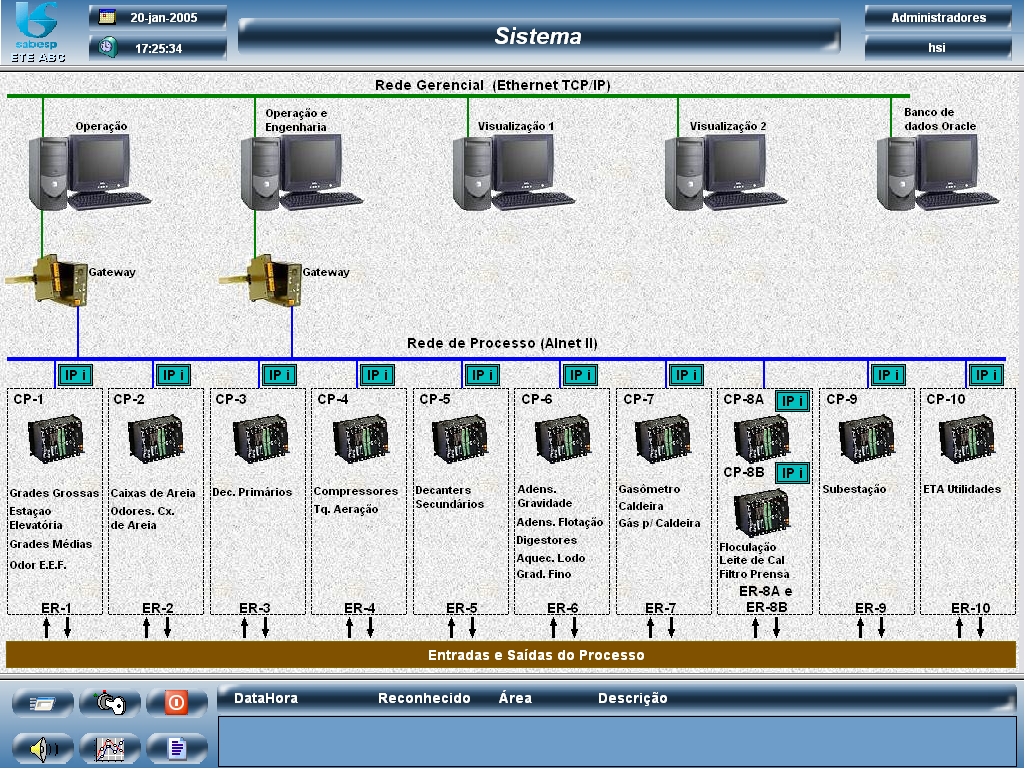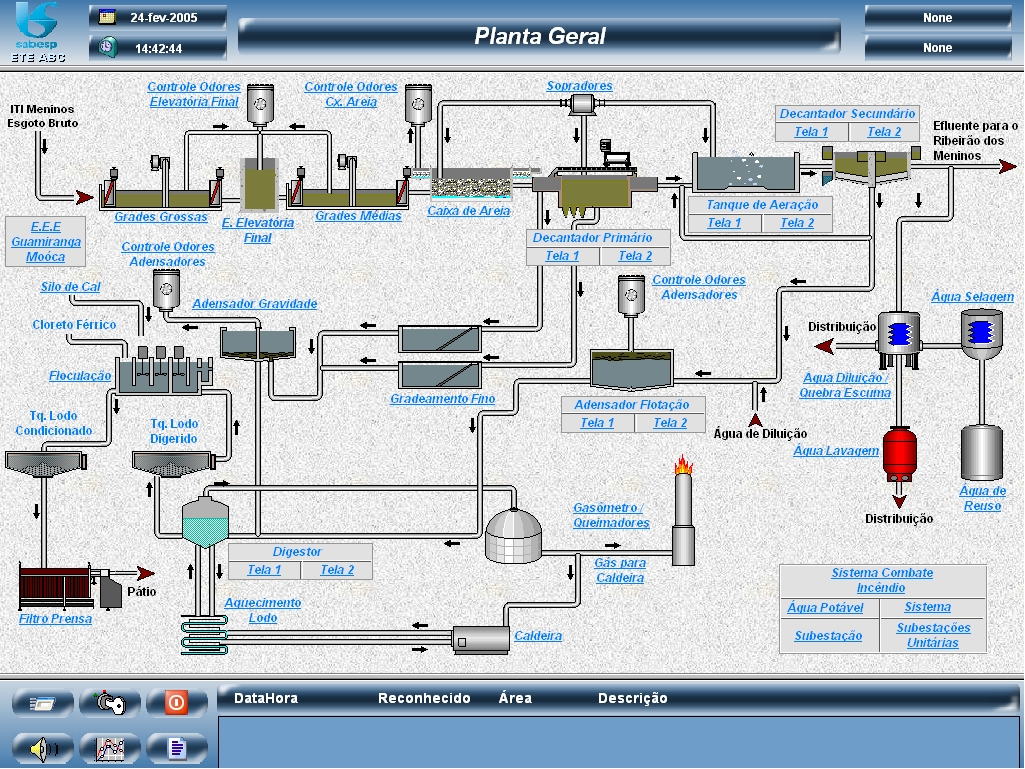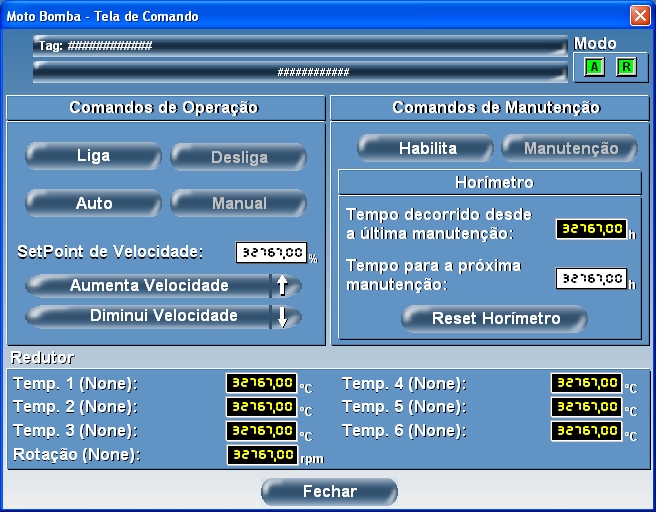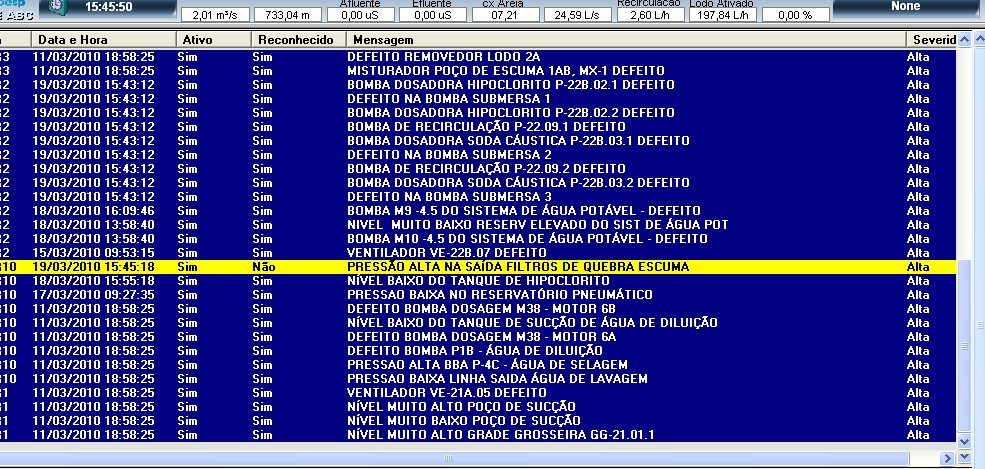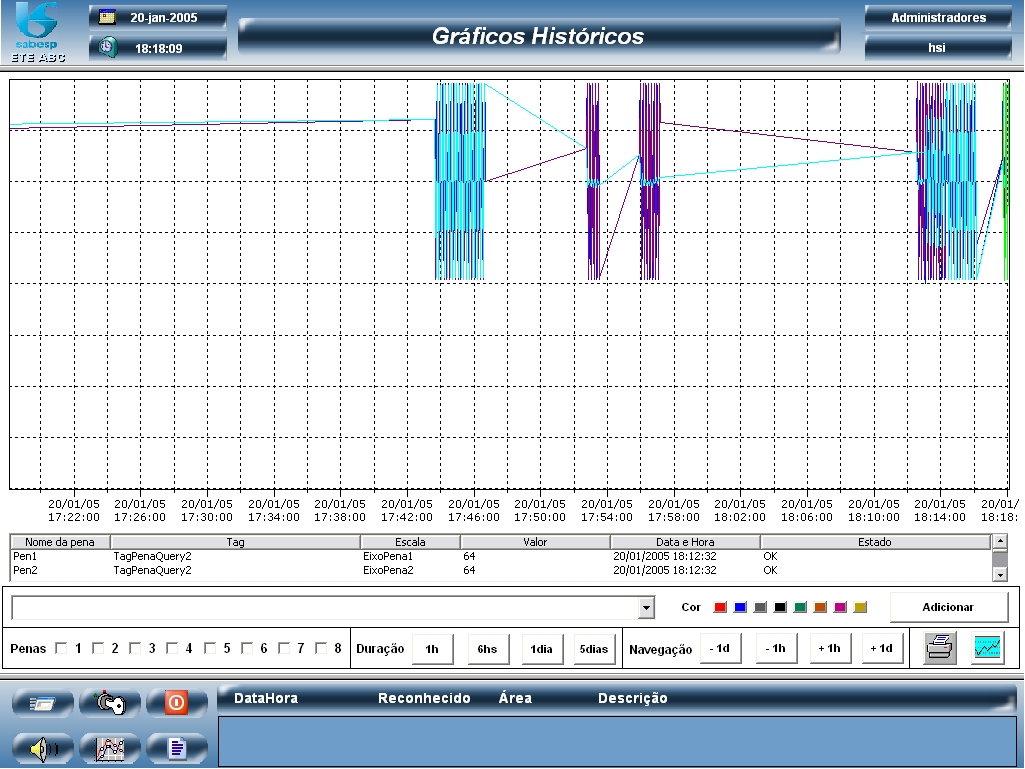Application of Elipse E3 software in the ABC Wastewater Treatment Station – ETEABC
This case presents the application of the Elipse E3 to monitore the ABC Wastewater Treatment Station, located at 3000 Almirante Delamare Avenue, Heliópolis, in São Paulo

Needs
Sabesp is responsible for basic sanitation services, which consists of receiving, treating, and distributing water, besides collecting and treating wastewater. Founded in 1973, the mixed economy company has the Government of the State of São Paulo as its main shareholder. In 2002, Sabesp became the first company to join São Paulo Stock Exchange. Simultaneously, had its shares listed in the New York Stock Exchange. Of the 645 cities in the state of São Paulo, Sabesp works in 365, and cooperates with other States. It has 16.1 thousand employees in average, with 17 business units.
Looking forward to monitor the process performed in the ABC Wastewater Treatment Station – ETEABC, Sabesp decided to adopt E3 software from Elipse. The solution was installed in the ETEABC supervisory and control room, located at 3000 Almirante Delamare Avenue, Heliópolis, in the city of São Paulo. For this, Sabesp counted on HSI Informática Industrial Ltda., a company specialized in programming and installing the system. The goal when applying Elipse software was to count on a supervisory system with a good interface and nearly flawless. They purchased six E3 copies, one Server, one Studio and four Viewers.
Solution
The supervisory and control system based on E3 was installed on two Control Stations. The first one, named Master, communicates with 11 PLCs installed on several sectors of the treatment process, and with an Oracle database server. The second Control Station, on the other hand, remains in Hot Standby, and it is automatically started in case of an anomaly in the first one.
According to Rachel Andrade da Silva, maintenance technician in Sabesp, around 70% of information about the wastewater treatment process performed in the station came from Elipse software. A process made of several steps, all controlled by E3.
In the beginning, the sewage arriving at the station passes through a grill system where solid materials are removed (wood, plastic, etc.). Then, sewage pumps towards sand boxes. Inside them, the separation between sand and sewage is performed. After that, sewage is sent to decantation, tanks where water is decanted, separated from mud. From then on, two new steps start, one for treating liquid waste (liquid phase) and another one for mud (solid phase).
In the liquid phase, the sewage initially passes through a microbiological treatment to remove its organic load. Next, part of the treated sewage returns to rivers, while the other one, smaller, is sent to a unit called Utilities. There, it passes through a filtering process, being reused in the station or sent to a sector called Reuse ETA – Reuse Water Treatment Station. In this place, treated sewage passes through a new treatment based on hypochlorite, so it can be used by cities for street cleaning and sewage network unblocking, or by industries using non drinking water.
In the solid phase, initially there is a thickening, that is, a growth in mud density by means of anaerobic bacteria. Next, whitewash and ferric chloride are added to concentrated mud, so it can be sent to squeezer filters. During these phases, a biogas burning is performed, to reduce environment impact of this gas in the atmosphere. Finally, mud comes out of the squeezer filters as blocks, ready to be placed on landfills.
Besides allowing operators to monitor different process phases, E3 also controls all pumps and valves, devices responsible for pumping and passing sewage through the station. Using a single screen, it is possible to not only monitor if a pump is in maintenance, but also triggering it or not, acting upon its rotation speed in order to slow down or speed up sewage flow.
Another feature provided by the software is the E3 Alarm. Using a single screen, the operator can be warned about any type of failure in station devices, being informed about which area is in trouble, date, time, severity, any detail of the occurrence. The software also monitors the current situation of devices. For this, the operator only has to click the Maintenance option and see which color the device is currently displaying (green = pump is on, red = pump is off, yellow = pump on failure, and blue = pump on maintenance).
Added to this control, E3 allows the operator to follow valve behavior, pH analyzers and other measuring devices of the station, when facing a new parameter indicated by the system. As an example, in case the operator decides that the dissolved oxygen meter must work under a new value, he types this new parameter on the command screen of the PID parameter. After that, the PLC calculates what is the opening level of the valve controlling the release of this dissolved oxygen, in order to reach that new value. Everything recorded as charts and historics.
Benefits
- Accompanying the different steps of the sewage treatment process using only one main screen.
- Controlling pumps, with the possibility of interfering in the process in order to speed up or slow down sewage flow.
- Supervising device status, in order to know if they are turned on, turned off, on failure, or in maintenance.
- Monitoring all details regarding any type of failure in pumps.
- Supervising water treatment processes coming from sewage so that it can be returned to rivers, sold to the city of São Paulo or else sent to industries using non drinking water.
- Accompanying the thickening process and further transformation of mud into blocks, so that it can be placed on landfills.
- Monitoring biogas burning, mostly methane, highly toxic gas released during the process of mud treatment.
Datasheet
Client: Companhia de Saneamento Básico do Estado de São Paulo – Sabesp
Systems Integrator: HSI Informática Industrial Ltda
Software: Elipse E3
Number of Copies: 2
Platform: Microsoft Windows XP Professional
Number of I/O Points: 3000
I/O Driver: AL2000-MNS
